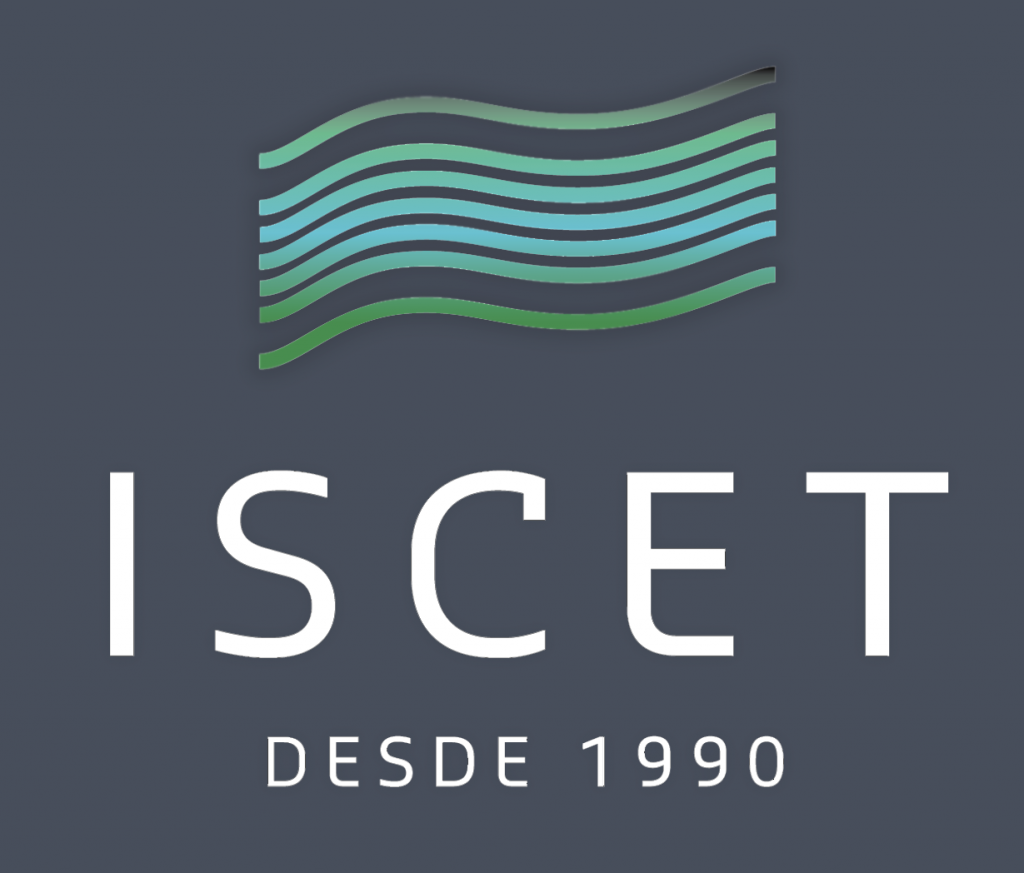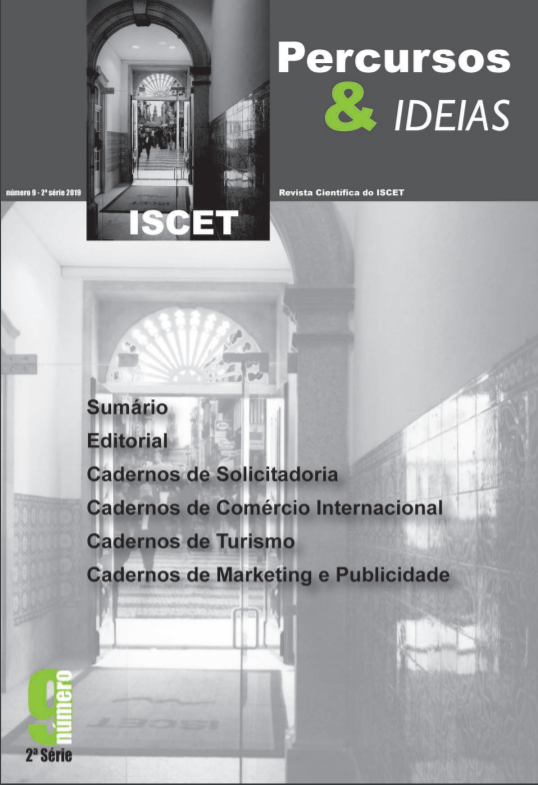A internacionalização no setor do mobiliário: estudo exploratório às empresas
Tiago André Martins1, Luís Dias Pacheco1 and Fernando Oliveira Tavares
 2
2
1 Universidade Portucalense Infante D. Henrique, Porto, Portugal
2 ISCET – High Institute of Business and Tourism Sciences, Porto, Portugal
To cite this text:
Martins, A., Pacheco, L. D. & Tavares, F. O. (2019), A internacionalização no setor do mobiliário: estudo exploratório às empresas, Percursos & Ideias, Vol. 9, pp. 44-61.
Abstract
The main purposes of this exploratory study are to understand the main motivations responsible for the internationalization processes and to obtain information on the impact of the creation of a furniture cluster in the region of Paços de Ferreira, Portugal. The utilized method is quantitative and exploratory. It was found that the lack of self-funding and the scarcity of international distribution channels are the main obstacles to the internationalization of furniture companies. The companies operate in markets of less psychic distance, that is, geographically close (Spain and France), and with cultural and linguistic levels very similar to the domestic market (Angola). It is also concluded that the volume of business does not influence the internationalization and that there is no correlation between the company’s antiquity and internationalization too.
Keywords
Internationalization, Cluster, Furniture, International brand, Global strategy.
References
Altenburg, T.; Meyer-Stamer, J. (1999), “How to promote clusters: policy experiences from Latin America”, in World Development, 27 (9), pp. 1693-1713.
Andreff, W. (2009), “Outsourcing in the new strategy of multinational companies: Foreign investment, international subcontracting and production relocation”, in Papeles de Europa, 18, pp. 5-34.
Arbaugh, J.; Camp, S.; Cox, L. (2008), “Why don’t entrepreneurial firms internationalize more?”, in Journal of Managerial Issues, 20 (3),pp. 366-382.
Bahlmann, M.; Huysman, M. (2008), “The emergence of a knowledge-based view of clusters and its implications for cluster governance”, in The Information Society, 24 (5), pp. 304-318.
Barañano, A. (2004), Métodos e técnicas de investigação em gestão: manual de apoio à realização de trabalhos de investigação, Edições Sílabo: Lisboa.
Baum, M.; Schwens, C.; Kabst, R. (2015), “A latent class analysis of small firms’ internationalization patterns”, in Journal of World Business, 50 (4), pp. 754-768.
Baylis, J.; Smith, S.; Owens, P. (eds.) (2017), The globalization of world politics: an introduction to international relations, Oxford University Press: Oxford.
Bryman, A.; Bell, E. (2015), Business research methods, Oxford: Oxford University Press.
Buckley, P. (1993), “Barriers to internationalization”, in Luca Zan, Stefano Zambone & Andrew M. Pettigrew (eds.), Perspectives on strategic change, Dordrecht: Springer, pp. 79-106.
Caniels, M.; Romijn, H. (2003), “SME clusters, acquisition of technological capabilities and development: concepts, practice and policy lessons”, in Journal of Industry, Competition and Trade, 3 (3), pp. 187-210.
Filipe, L.; Montgomery, D. (2005), “The relationship between export assistance and performance improvement in Portuguese export ventures: An empirical test of the mediating role of pricing strategy adaptation”, in European Journal of marketing, 39 (7/8), pp. 755-784.
George, D.; Mallery, D. (2003), SPSS for windows step by step: A simple study guide and reference, 17.0 update, 10/e, Delhi: Pearson Education India.
Giuliani, E. (2005), “Cluster absorptive capacity: why do some clusters forge ahead and others lag behind?”, in European Urban and Regional Studies, 12 (3), pp. 269-288.
Hansson, A.; Hedin, K. (2007), Motives for internationalization, MSC diss., Uppsala: Uppsala University.
Johanson, J.; Wiedersheim‐Paul, F. (1975), “The internationalization of the firm – four Swedish cases”, in Journal of Management Studies, 12 (3), pp. 305-323.
Kadokawa, K. (2013), “A search for an industrial cluster in Japanese manufacturing sector: evidence from a location survey”, in GeoJournal, 78 (1), pp. 85-101.
Keohane, R.; Milner, H. (1996), Internationalization and domestic politics, Cambridge: Cambridge University Press.
Larrinaga, O. (2005), “La internacionalización de la empresa y la empresa multinacional: una revisión conceptual contemporânea”, in Cuadernos de Gestión, 5 (2), pp. 55-73.
Lawson, B.; Potter, A. (2012), “Determinants of knowledge transfer in inter-firm new product development projects”, in International Journal of Operations & Production Management, 32 (10), pp. 1228-1247.
Lee, K.; Carter, S. (2011), “Global marketing management”, in Strategic Direction, 27 (1), [Consult. a 01.02.2018]. Disponível em: https://doi.org/10.1108/sd.2011.05627aae.001
Maggioni, M. (2002), Clustering dynamics and the location of high-tech-firms, Heidelberg: Springer Verlag.
Marano, V.; Tashman, P.; Kostova, T. (2017), “Escaping the iron cage: Liabilities of origin and CSR reporting of emerging market multinational enterprises”, in Journal of International Business Studies, 48 (3), pp. 386-408.
Marôco, J. (2011), Análise estatística com o SPSS Statistics, Pêro Pinheiro: ReportNumber.
Martins, C. (2011), Manual de análise de dados quantitativos com recurso ao IBM SPSS: saber decidir, fazer, interpretar e redigir, Braga: Psiquilíbrios Edições.
Mason, C.; Castleman, T.; Parker, C. (2005), “Can knowledge management save regional development?”, in Proceedings of the CRIC Cluster Conference: Beyond clusters: Current Practices & Future Strategies Conference Proceedings), Ballarat, University of Ballarat, Centre for Regional Innovation and Competitiveness, pp. 1-15.
Masum, M.; Fernandez, A. (2008), Internationalization Process of SMEs: Strategies and Methods, Master Thesis EFO705, Västerås: Mälardalen University School of Sustainable Development of Society and Technology.
Oviatt, B.; McDougall, P. (2005), “Defining international entrepreneurship and modeling the speed of internationalization”, in Entrepreneurship Theory and Practice, 29 (5), pp. 537-554.
Pereira, A. (2008), SPSS: Guia prático de utilização. Análise de dados para ciências sociais e psicologia, Lisboa: Edições Sílabo.
Pestana, M. H.; Gageiro, J. N. (2003), Análise de dados para ciências sociais: a complementaridade do SPSS, Lisboa: Edições Sílabo.
Pinho, J.; Martins, L. (2010), “Exporting barriers: Insights from Portuguese small-and medium-sized exporters and non-exporters”, in Journal of International Entrepreneurship, 8 (3), pp. 254-272.
Porter, M. (1998), “Clusters and the new economics of competition”, in Harvard Business Review, 76 (6), pp. 77-90.
— (2000), “Locations, clusters, and company strategy”, in G. Clark, M. Feldman & M. Gertler (eds.), The Oxford Handbook of Economic Geography, Oxford: Oxford University Press, pp. 253-274.
Reuer, J.; Ariño, A.; Mellewigt, T. (2006), “Entrepreneurial alliances as contractual forms”, in Journal of Business Venturing, 21 (3), pp. 306-325.
Ryzhkova, E.; Prosvirkin, N. (2015), “Cluster initiatives as a competitiveness factor of modern enterprises”, in European Research Studies, 18 (3), pp. 21-30.
Saunders, M. (2011), Research methods for business students, 5th ed., India: Pearson Education India.
Simões, V. (1997), Inovação e Gestão em PME, Temas de Economia,Lisboa: Gabinete de Estudos e Prospectiva Económica – Ministério da Economia.
Smarzynska, J. (2004), “Does foreign direct investment increase the productivity of domestic firms? In search of spillovers through backward linkages”, in American Economic Review, 94 (3), pp. 605-627.
Tavares, F.; Marques, A. (2013), “A internacionalização no setor da cortiça: Estudo exploratório às empresas”, in Revista Portuguesa e Brasileira de Gestão, 12 (4), pp. 37-49.
Tavares, F.; Pacheco, L.; Rodrigues Pires, M. (2016), “Gestão do Risco nas ‘PME de Excelência’ Portuguesas”, in Tourism & Management Studies, 12 (2), pp. 135-144.
Walter, S. (2017), “Globalization and the demand-side of politics: How globalization shapes labor market risk perceptions and policy preferences”, in Political Science Research and Methods, 5 (1), pp. 55-80.


